Online marketplace industry is growing rapidly. As more and more entrepreneurs entering every day with new and creative ideas. You need to keep up with the recent changes in the marketplace trends.
In 2024, the global ecommerce market was valued at $6.5 trillion, and it is projected to reach $55.6 trillion by 2027
Why is this important?
Because ecommerce is changing fast, with new technologies like voice search, mobile shopping, and AI.
As an online marketplace owner, it’s essential to stay updated on these online marketplace trends to reduce risks and stay ahead of the competition.
In this blog, we’ll talk about the top online marketplace trends you should know for modern marketplace development and how you can use these changes to improve your business. Keep reading!
Key Takeaways on Marketplace Trends
- AI-driven marketplaces are some recent changes in the marketplace trends providing personalized shopping experiences and optimizing product recommendations.
- Blockchain integration increases transparency and security in line with the latest ecommerce evolution.
- The combination of AR, VR, and IoT is redefining next-gen online marketplace trends, makes for a vibrant and interactive experience for users.
- Social commerce rise happened with platforms like Instagram and Facebook, giving a whole new digital shopping experience, whereby one can buy directly and have a more engaging experience.
- Sustainability is becoming more important in the digital marketplace trends, with eco-friendly practices attracting environmentally conscious customers.
Identify One Recent Change in the Marketplace and Its Impact
One of the most important trend in the marketplace is the rise of AI-driven personalization. All the giants in the industry of ecommerce are using artificial intelligence to improve customer experiences through personalized recommendations, effective pricing, and automated customer support.
This kind of shift ahs been happened because of consumer demand for relevant shopping experiences. Businesses are aiming to boost conversion rates. Not only giants, companies which are using AI-powered tools experiences a higher engagement and retention rates. It plays as an important factor in the marketplace success.
Top 21 Latest Marketplace Trends in 2025
Here are some recent emerging ecommerce trends in the marketplace:
- AI-Driven Marketplaces
- Sustainable and Eco-Friendly Marketplaces
- Blockchain and Decentralized Marketplaces
- Mobile Shopping
- Live Shopping
- Shoppable Videos and Images
- Vertical Marketplaces
- Buy-Online-Pick-Up-In-Store (BOPIS)
- Social Commerce Rise
- NFTs and Digital Assets Marketplaces
- Hyperlocal Marketplaces
- Subscription-Based Marketplaces
- AI-Powered Inventory and Supply Chain Management
- Multi-Vendor Marketplaces Trends Continues To Grow Beyond
- Any Top Online Marketplace Trends Need A Transparent Niche
- Customers Convenience Is Now Among Recent Change In The Marketplace
- Attention To Privacy And Trust Is The Main Emerging Marketplaces Trends In The Market
- AR, VR, And The Internet of Things (IoT)
- Expansion of Communication Channels
- Using User Data For A Far Better User-Experience
- Optimizing Your Store Voice Search With Digital Marketplace Trends
- Sophisticated Multi-Vendor Models Will Thrive Online Marketplace Trends
1. AI-Driven Marketplace Trends
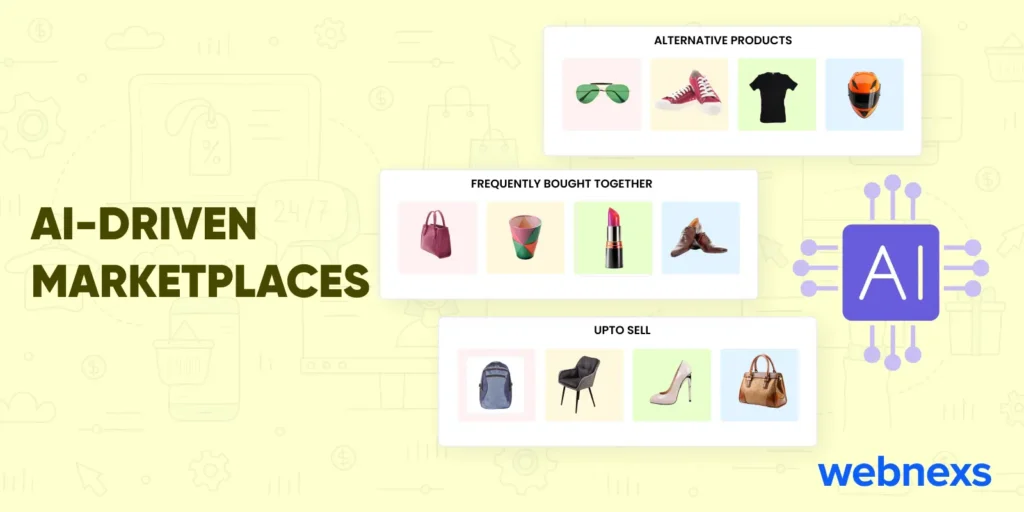
By 2026, global AI in retail market to reach $23.4 billion
Ecommerce evolution is in the next stage with AI-driven marketplaces to deliver personalized shopping experiences.
Future of digital marketplaces lies in the hands of AI. Integration of machine learning and deep learning algorithms optimize product recommendations based on user behavior.
AI-powered tools give elasticity on pricing strategies like price adjustment based on demand, competitor pricing, and customer profiles.
AI continuously analyzes market trends and makes predictive personalization to fluctuates the price in real time to get better profit margins.
Additionally, AI-driven chatbots and virtual assistants are redefining customer service online.
Interesting Fact
Did you know that Amazon’s AI-driven recommendations is responsible for 35% of its total sales?
This is because AI systems learn from customer behavior and improve the recommendations to meet individual preferences.
2. Sustainable and Eco-Friendly Marketplaces
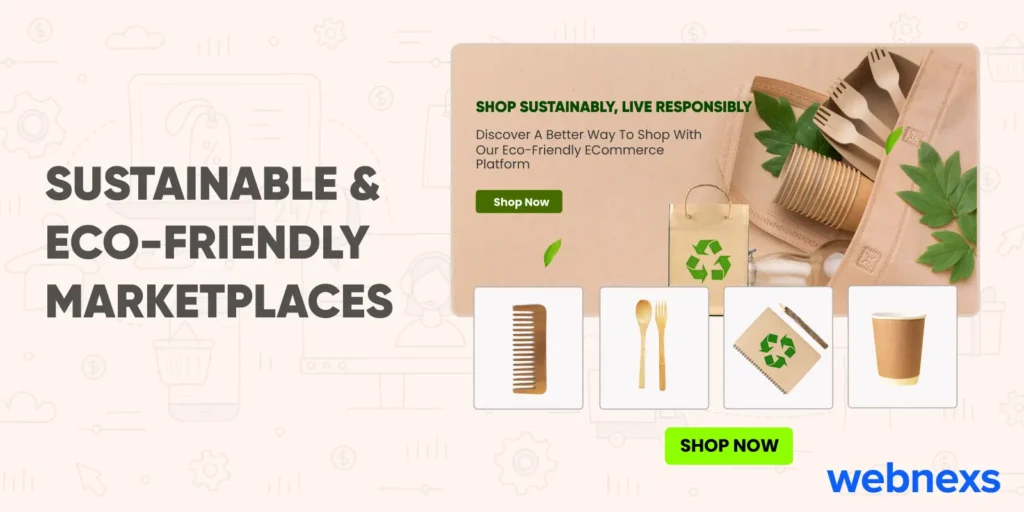
38% of global shoppers are willing to pay more for eco-friendly products
Recent changes in the marketplace have seen a shift towards sustainability with eco-friendly user experiences.
As user experience is the core of user engagement and retention, the future of marketplace is constantly focusing on user-friendliness.
Adopt greener product methods and materials to attract eco-conscious consumers. AI and machine learning technologies are experts in this field.
Ecommerce platforms use transparent supply chains for growing demands and also feature carbon-neutral shipping options.
These efforts are not only to meet marketplace consumer preferences but also to stay aligned with global sustainability goals.
At last, marketplaces updates insist that customers buy, sell, and reuse the goods to reduce waste and lower costs.
Interesting Fact
Did you know that 66% of consumers say they would stop buying from companies that contribute to environmental harm?
You can see the growth in the importance of sustainability in eco-friendly marketplace future with the above stats.
3. Blockchain and Decentralized Marketplaces
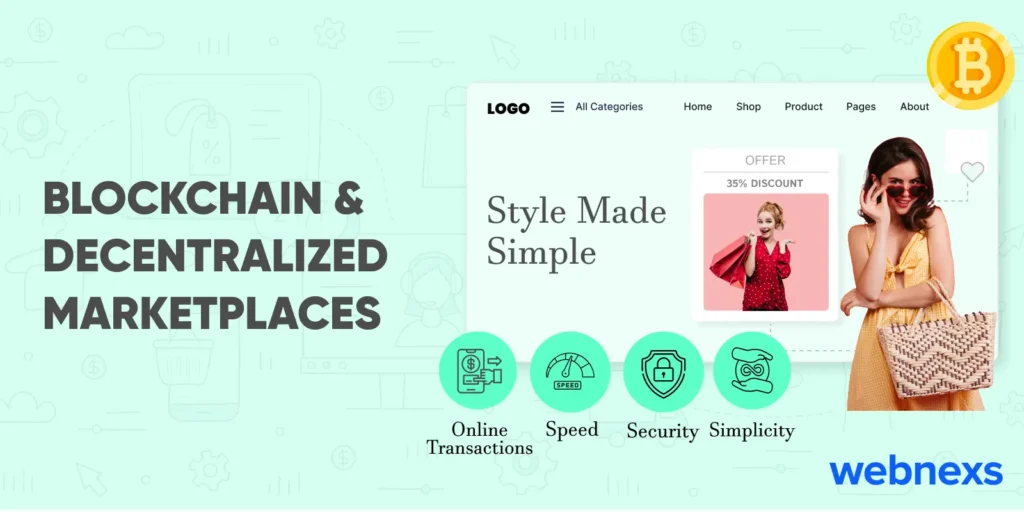
By 2026, the global blockchain market in eCommerce is projected to reach $67.4 billion
Current marketplace developments highlight that there is a rise in blockchain technologies. Decentralization in marketplaces increases transparency for both buyers and sellers.
Blockchain in ecommerce can create transparent records to build trust in online transactions.
Smart contracts powered by blockchain automate transactions and act without the need for central authorities.
Decentralized marketplaces create a borderless economy and adapt to digital currencies for transactions.
Interesting Fact
Did you know that over $15 billion in cryptocurrency transactions were processed through blockchain-based decentralized marketplaces in 2023?
This demonstrates the growing trust in and adoption of blockchain technology as the backbone for secure, transparent, and borderless online marketplaces.
4. Mobile Shopping

By 2028, mobile commerce will represent 63% of total ecommerce sales
Mobile-first shopping experiences are a priority in online marketplace trends, as consumers increasingly use smartphones to browse, compare, and buy products.
To address this demand, successful marketplaces are integrating Progressive Web Apps (PWAs).
Which leverage the best of web and mobile apps providing features such as offline browsing, push notifications, and app-like responsiveness.
Streamlined mobile interfaces with user-friendly navigation, quick-loading content, and responsive design are no longer a choice, they’re imperative to keeping users on board and driving conversions.
In addition, geolocation-enabled platforms and voice-guided shopping are further enhancing the mobile buying experience, boosting customer interest and repeat purchases.
Mobile commerce trends is not about conforming to smaller screens, it’s about reinventing the buyer’s journey for a hyper-connected, always-on user base.
Interesting Fact
Did you know that mobile users are 160% more likely to convert on sites that provide a seamless mobile experience?
As online shopping behavior changes, brands that focus on mobile optimization are beating competitors in engagement and revenue.
5. Live Shopping
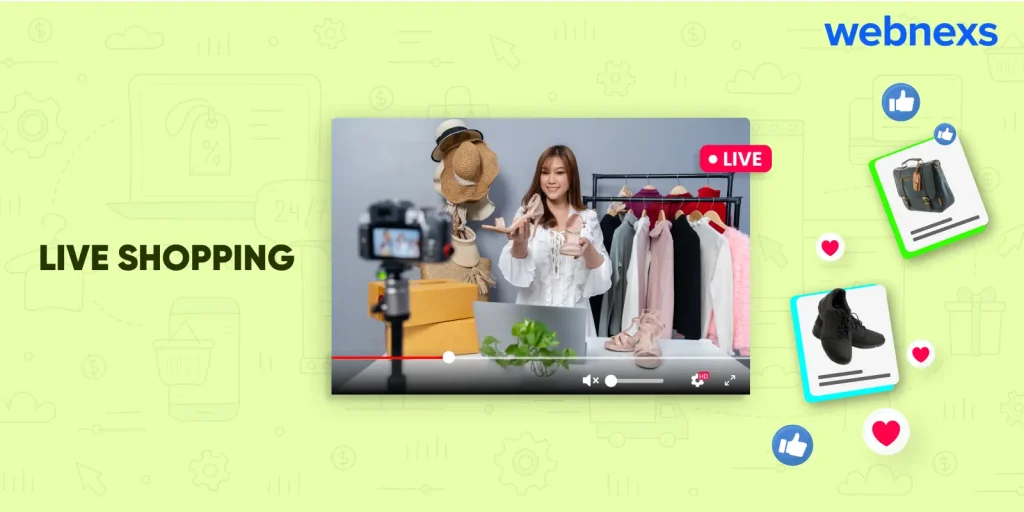
By 2026, live shopping will account for as much as 20% of global ecommerce sales
Driven by its synergistic mix of entertainment, live interaction, and immediate purchasing.
Live shopping is transforming online sales trends by combining social interaction with effortless transactions providing a living, trust-establishing experience for online consumers.
This model enables sellers, influencers, or brand representatives to showcase products through live video streams while engaging with viewers, responding to questions, and providing exclusive offers in real time.
With livestream ecommerce reaching $50 billion in sales in 2023 and expected to grow 36% over the next three years, it’s rapidly becoming a fundamental strategy for scalable marketplace.
Innovative platforms like Amazon Live, Taobao Live, and Nordstrom Live are paving the way.
Also social media platforms like TikTok, Instagram, and YouTube are now indispensable for live commerce trends integration.
Marketplace operators turning their way to built-in livestream features or collaborating with third-party platforms such as Channelize.io and GoLive to provide engaging live shopping modules.
In contrast to legacy ecommerce, live shopping engages emotional purchase behavior, resulting in a 30% average conversion rate 10 times more than traditional formats.
Interesting Fact
In case you didn’t know, 70% of Gen Z shoppers claim live shopping makes online shopping feel more real and credible.
As upcoming ecommerce technologies move toward experience-first models, live shopping is becoming an effective driver of conversions as well as community-building.
6. Shoppable Videos and Images

72% of consumers are more likely to buy a product after watching an engaging video
Shoppable videos and images are the fastest rising trends in online marketplaces, where content and commerce come together to minimize the buying journey and drive purchase intent.
Interactive assets that allow users to click on a product within a video or an image, going from inspiration directly to transaction without leaving the site.
Features such as TikTok, Instagram, and Pinterest now allow brands and creators to include product links within visual content, and partnerships with ecommerce stores like Shopify make it easy to monitor conversions and manage sales.
Brands such as IKEA and Amazon have carried this trend forward in extremely curated.
Environment with turning videos, room configurations, or lifestyle shots into shoppable worlds tailored around user interests.
This transition is intentional. Encouraging consumers during moments of maximum interest, marketplaces can increase engagement, reduce bounce rates, and improve conversions more quickly.
Interesting Fact
85% of consumers are likely to buy something after watching a shoppable video.
Future of marketplaces are moving beyond just shoppable media, visual experiences have become a requirement for brands that want to reach and convert shoppers today.
7. Vertical Marketplaces
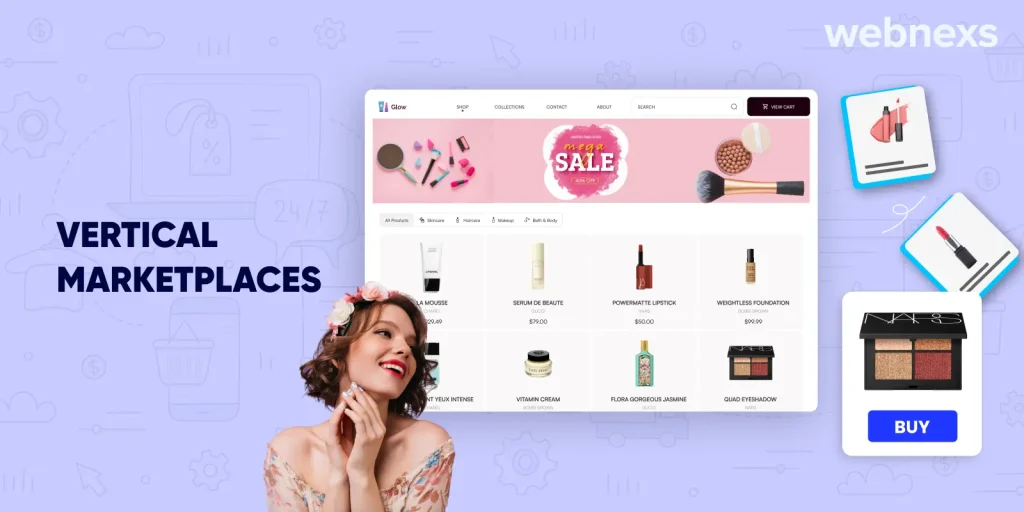
The number of vertical B2B marketplaces in the U.S. has surged from 75 to over 500 in the past five years
Vertical marketplaces are opposite to horizontal marketplaces. Which serves for a specific industry, product category, or customer demographic. It is one of the most strategic online marketplace trends for differentiation and brand loyalty.
Platforms like Houzz (home design), AngelList (startup hiring), and PlanMyKids (children’s activities) are the examples to narrow down the focus to get higher conversion rates.
These marketplaces offer curated solutions, industry-specific features, and expert content that generally does not match with the broader platforms.
This model suits well for the entrepreneurs and businesses entering the marketplace. Vertical platform is the fastest route to build authority within a niche and reduces competition compared to broader models.
Also vertical marketplaces are highly scalable. Can expand according to the services or products once a loyal customer base is established.
Interesting Fact
Did you know that vertical marketplaces often achieve 25% higher average order values due to their focused targeting and relevance?
Ecommerce innovation are at their peak right now. So vertical specialization is a sustainable strategy for long-term growth and better customer relationships.
Read more: What is difference between a startup and a small business?
8. Buy-Online-Pick-Up-In-Store (BOPIS)

The global BOPIS market is projected to reach $666.2 billion by 2028
BOPIS – Buy Online Pick In Store is the element of modern online marketplace trends. The convenience of ecommerce with the immediacy of in-store fulfillment.
Originally accelerated by the COVID-19 pandemic. But BOPIS continues post-pandemic too. Because the consumers value flexibility, speed, and the ability to bypass shipping costs or delays.
Major retailers like Walmart, Target, and Home Depot have integrated advanced BOPIS solutions. Walmart’s store assist reduces wait times by 40% with more accurate pickups.
The strategy provides multiple benefits like real-time stock assurance, reduced last-mile delivery costs, and enhanced customer satisfaction.
BOPIS is a customer first model as it bridges the online and offline commerce. This is specifically for marketplaces with physical retail partners or omnichannel ambitions.
Interesting Fact
Did you know that 50% of consumers who use BOPIS end up making additional in-store purchases during pickup?
Incorporate BOPIS to your marketplace as such hybrid shopping is mandatory. It’s essential to stay competitive in the future of online marketplaces.
9. Social Commerce Rise
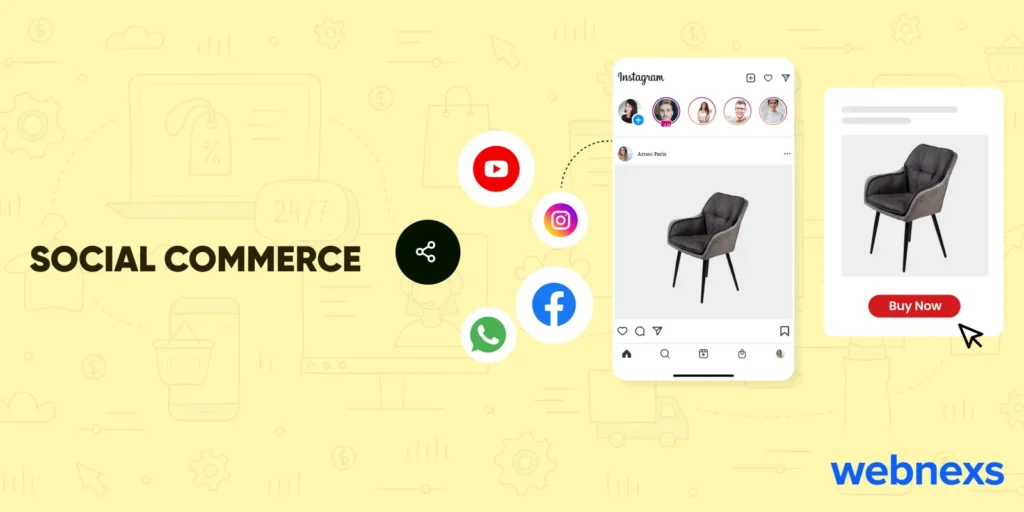
The global social commerce market is projected to reach $1.2 trillion by 2025
Social commerce is a key driver of ecommerce growth according to the current marketplace developments.
Direct integration with platforms like Instagram and Facebook can influence purchasing behavior.
Algorithms now use element data to personalize shopping recommendations, improving conversion rates and customer loyalty.
Next-gen marketplace features eliminate the friction in the shopping journey to shop without leaving the platform. It reduces drop-off rates.
Interesting Fact
Did you know that 93% of social media users discover new products through social platforms, and 50% of them end up making a purchase within a week?
The power of social commerce to influence buying behavior has been proven with the above stats.
10. NFTs and Digital Assets Marketplaces
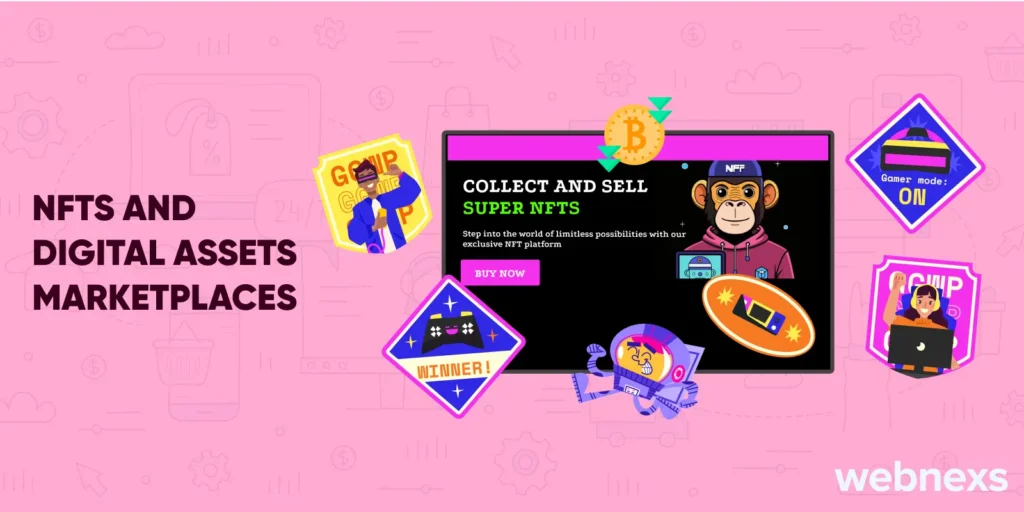
The global NFT market is projected to reach $232 billion by 2030
Platforms like OpenSea and Rarible have sparked this recent change in the marketplace trends. These platforms leverage blockchain technology to build authenticity.
As NFTs(Non-Fungible Tokens) gain traction, integration with cryptocurrency payment systems like Ethereum and Binance Coin smooths the transactions. It expands the market reach to a global audience.
Users can buy digital art, collectibles, and other virtual goods. Royalty payments and ownership transfers are automated with smart contracts on blockchain networks.
NFTs are a good choice for digital content creators and investors to benefit from secondary sales.
Interesting Fact
Did you know that 50% of all NFTs sold in 2021 were under $200?
NFTs are not just for high-end collectors, they are also accessible to a broad range of buyers. This opens the door for both small creators and investors to participate in the NFT ecosystem.
11. Hyperlocal Marketplaces
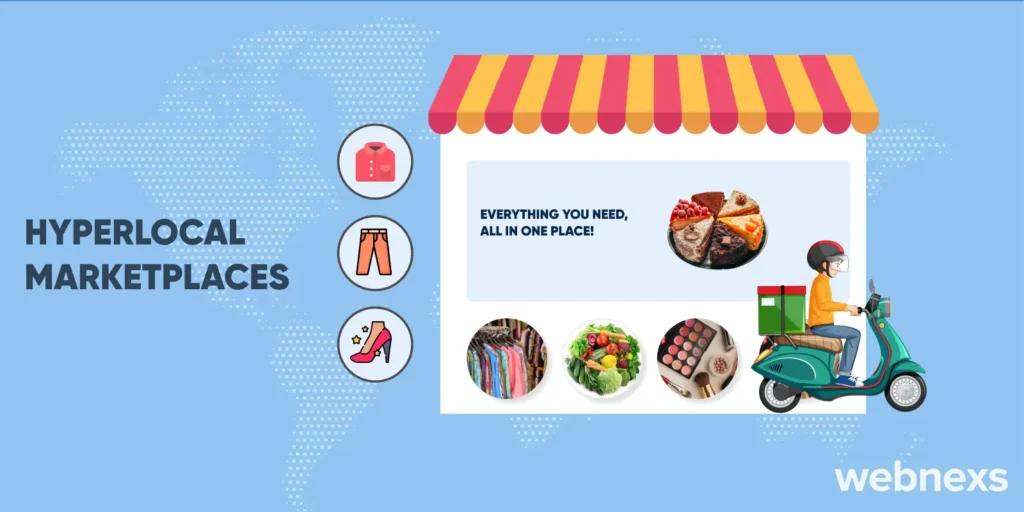
The global hyperlocal delivery service market size is projected to reach $78 billion by 2030
Connecting local buyers and sellers through online platforms is a latest retail marketplace trends.
Focus on transactions within specific geographic regions helps to capture the growing demand for local products.
Using location-based technology optimizes the search results based on proximity. This geo-targeting helps businesses to increase their visibility.
To capitalize on the hyperlocal trend, integrate local SEO strategies and build strong relationships with your community. Optimize for near-me search terms and improve local partnerships.
Interesting Fact
Did you know that “near me” searches have increased by 900% in the last two years?
Optimize for local visibility to meet the demand for nearby goods and services in your business or marketplaces.
12. Subscription-Based Marketplaces

The global subscription e-commerce market to reach $24 billion by 2028
There is a rapid rise in the subscription-based marketplace. Here, consumers access curated products or services regularly.
Businesses gain predictable revenue streams with the improvement of customer satisfaction through exclusive offers and personalized shopping experiences.
Use data analytics and customer segmentation to tailor and offer according to individual preferences. Personalization increases upselling or cross-selling of additional products.
Freemium and tiered pricing models are common subscription types in the marketplace updates. It can be chosen according to the needs of the customers.
Interesting Fact
Did you know that 55% of consumers prefer subscription services because of the convenience and ease they offer?
This model is one of the most promising trends in the ecommerce landscape. Use the increase in demand for subscription-based marketplaces to generate more revenue.
13. AI-Powered Inventory and Supply Chain Management
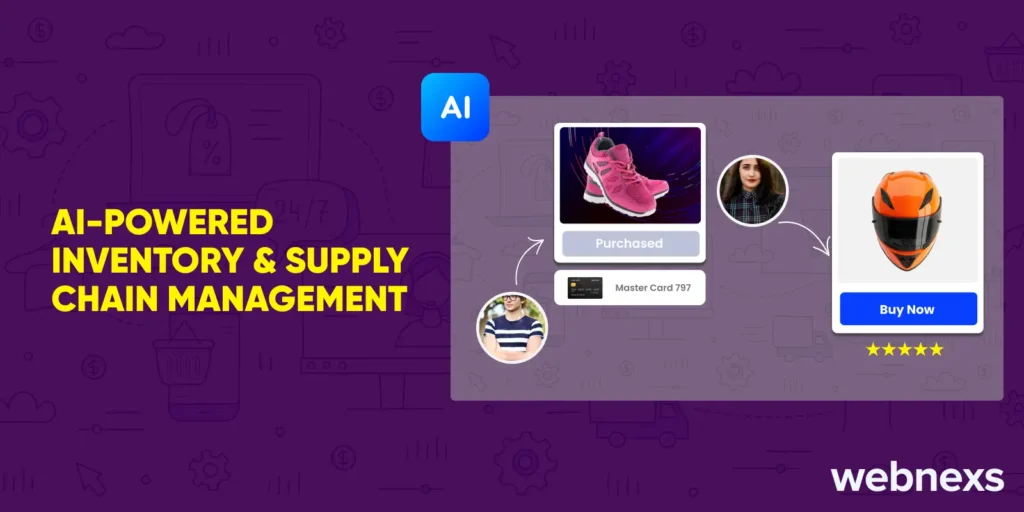
The AI-powered supply chain market is expected to grow to $40.53 billion by 2030
Optimize ecommerce operations with the trends in marketplaces. AI tools now predict demand trends and adjust stock levels.
So you can avoid the risk of overstocking or stockouts. Forecast consumer demand with the integration of machine learning algorithms.
Real-time data analysis minimizes human error and optimizes the entire supply chain. A data-driven approach helps businesses to adjust prices.
AI in supply chain management has cloud-based platforms to get real-time data tracking. Automation reduces manual intervention and utilizes predictive analytics for decision-making processes.
Interesting Fact
Did you know that AI-powered demand forecasting can reduce forecast errors by 50%?
With AI, supply chain management becomes more accurate, efficient, and adaptable to changing consumer behavior.
14. Multi-Vendor Trends in Marketplace Continues To Grow Beyond
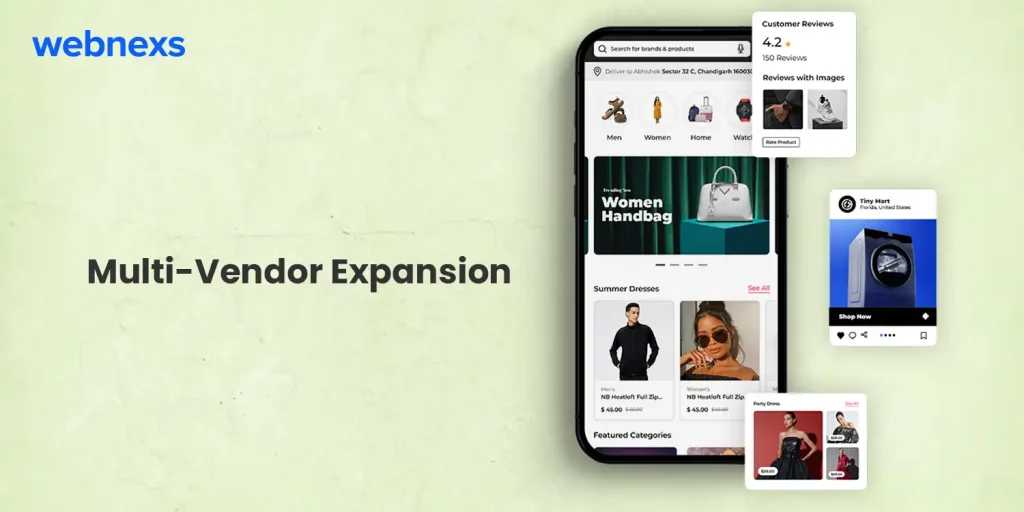
$8.7 trillion of sales forecasted via multi vendor marketplaces by 2025
One simply cannot underrate the caption “importance of new marketplaces in this ecommerce driven era”.
Companies like Uber struggle with turning a positive income. But if you check out global eCommerce multi-vendor trends in the marketplaces in 2025, you’ll see these platforms thriving and growing rapidly.
Every year, the top 10 marketplaces sell $1 trillion worth of products. And by 2025, mobile marketplaces will account for 40% of the worldwide online retail market.
Not only that – 12% of major retailers operate an online shopping marketplace, and 32% are considering opening one.
Due to the convenience offered by the marketplaces, there is no wonder why the most popular digital marketplace trends like Amazon are the most precious public companies globally.
Interesting Fact
Did you know that 85% of Amazon’s total sales now come from third-party sellers?
The multi-vendor marketplace model has turned Amazon into a dynamic ecosystem. It drives unbelievable growth and revenue in the ecommerce business.
Read more: How to choose the multi vendor platform?
14. Any Top Online Marketplace Need A Transparent Niche
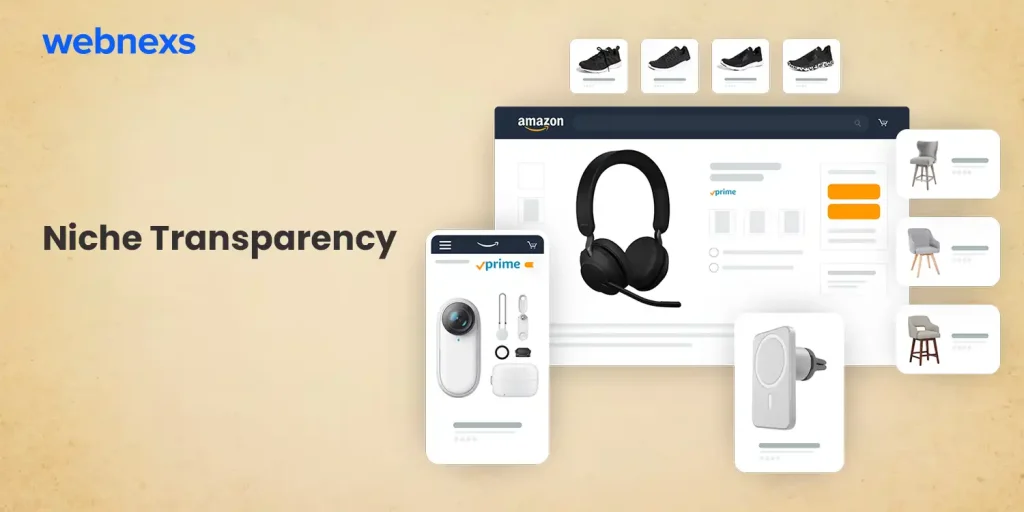
By 2025, niche marketplaces are expected to grow by 25% annually
Amazon was the biggest online marketplace that made it big which is now the best place to sell online. Even Amazon started by focusing on a niche (books) and grew over time to become a marketplace for top market trends now.
Now more than ever, online retail marketplaces have got to narrow their focus on facing out. So think of it this way: Will customers want to use yet one more vacation rental site? Probably not. Airbnb already fulfills that requirement.
But if a consumer marketplace offers something specific, people will see its value. For instance, top marketplace companies charge for rental listings or a marketplace that targets a specific audience, like families or disabled travelers.
Now, narrowing down your niche when you’re first getting started doesn’t mean that you simply can’t expand afterward. That’s how all examples of the largest marketplace, and retail marketplaces got created, like Airbnb and Uber.
Interesting Fact
Did you know that niche marketplace platforms often see 50% higher conversion rates than general marketplaces?
Focus on a well-defined niche so that your marketplace can build strong customer loyalty and become a trusted source in that area.
15. Customers Convenience Is Now The Future of Marketplaces
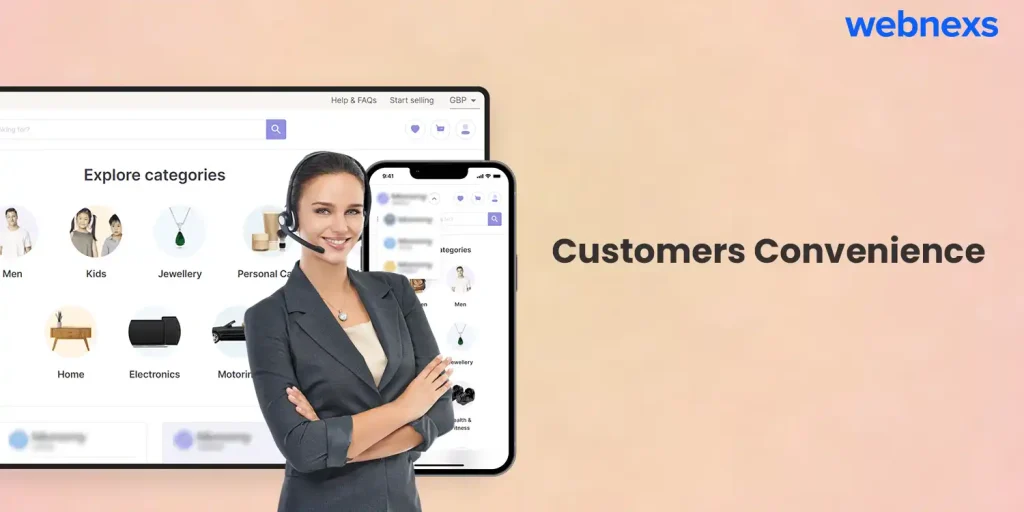
Payment Options Drive Online Shopping Choices for 70% of Consumers
What’s one of the essential advantages of the marketplace business model?
It’s easy: Convenience.
Digital marketplaces give buyers far more choices than most other online stores. It is applicable both to cost and, therefore, the sorts of goods offered on marketplaces.
But as online business is getting more convenient than ever, marketplaces updates should continue with this trend. Most eCommerce stores now integrate features like one-click payments, emails with recommended items, and even ways to undertake products online.
Instant ecommerce marketplace payment features can make their platforms even more convenient to consumers and compete with current market trends within the eCommerce evolution.
Interesting Fact
Did you know that 95% of customers report that convenience is a key factor in choosing where to shop online?
With features like one-click payments and instant checkouts, you can reduce cart abandonment rates. Convenience makes the customers stay in touch with you.
16. Attention To Privacy And Trust Is The Main Emerging Marketplaces Trends In The Market

54% of global consumers are less likely to engage with a platform if they don’t trust the company with their data
Right now, privacy may be a significant issue in tech. With Facebook’s data leaks and a growing concern about how our data is handled and who gets access to that, marketplace examples are going to be more scrutinized than ever.
It also applies to marketplaces. After all, trust is one of the most vital aspects for a best multi-vendor marketplace. That’s why it is critical to adopt the trend of online shopping for you as a marketplace business owner.
But how does one confirm you retain privacy standards on your online marketplace trends?
For instance, you’ll have to be ready to moderate your marketplace community with marketplace updates like, offer secure payments, and offer support to answer any privacy concerns.
Interesting Fact
Did you know that 97% of online buyers are more likely to trust and return to an ecommerce site that clearly states its data privacy policies?
Businesses that focus on industry-standard security measures and transparency over the customer’s data will see an improvement in customer loyalty and growth in the long term.
Visit Here: Ecommerce Marketplace Seller Onboarding Process
17. AR, VR, And Therefore The Internet of Things
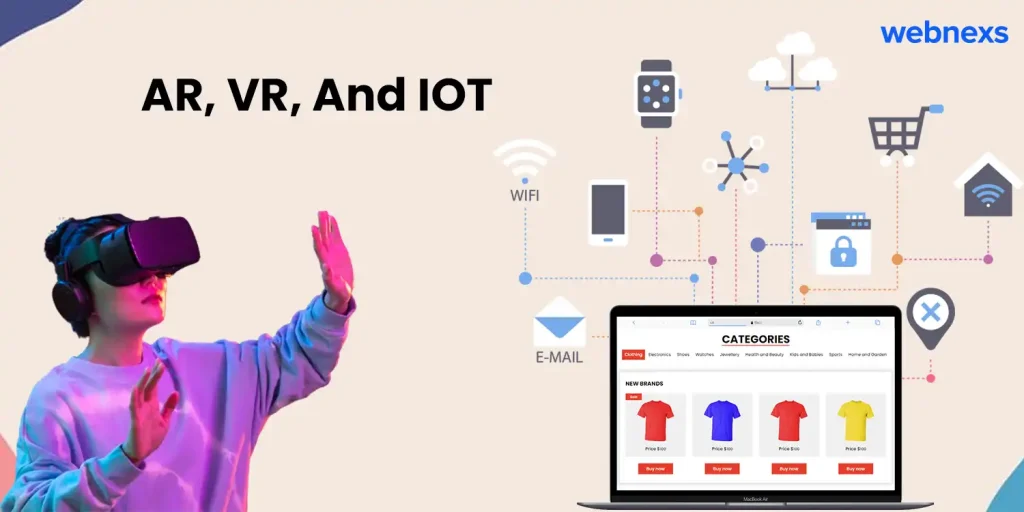
The AR and VR market in ecommerce is projected to reach $11.6 billion by 2027
What are a number of the foremost exciting technologies right now? That’s right. Augmented Reality (AR), Virtual Reality (VR), and therefore the Internet of Things(IoT). These are a number of the foremost promising online shopping marketplaces.
But will they have an impact on marketplace changes? And how. Better you see, these technologies will even have better ways for multi-vendor marketplace clients to join and shop.
For instance, AR can help customers see how a bit of furniture would look in their homes.
But it doesn’t stop there. These technologies will enable better customer service and better conversion rates.
Interesting Fact
Did you know that 71% of customers would shop more frequently from a retailer if they offered an AR experience that allows them to visualize products in their environment?
AR in your marketplace has a significant impact on customer engagement. These technologies continue to shape the future of online shopping.
Read More: Growth of Artificial Intelligence in Ecommerce Business 2024
18. Expansion of Communication Channels

63% of customers report that they are more likely to return to a site that offers live chat or chatbot support
Do you already offer email, chat, and possibly phone support as alternatives for patrons to urge retouch? Great! But considering what percentage of alternative communication methods there already are out there, you’ll probably need to offer even more in the future.
Think about it: People increasingly prefer comfort and simple communication through Facebook Messenger, WhatsApp quotes, and other messaging apps.
This doesn’t just apply only to your customer service but also increases in messaging apps. In short, your users will want more straightforward ways to speak with one another.
The need for communication expansion doesn’t stop with customer service. Connect with buyers, sellers, support teams, and even with brands via interactive forms.
Integrate features like live chatbots, video calls, and in-app messaging to your marketplace. Build trust and drive more sales with expanding communication.
Interesting Fact
Did you know that 80% of consumers expect brands to respond to their queries within 24 hours on social media platforms and messaging apps?
Real-time communication methods in your marketplace can meet these expectations and build happier customers.
Visit Here: 8 Steps to Build an Ecommerce Marketplace Website like Amazon
19. Using User Data For A Far Better User-Experience

80% of consumers are more likely to make a purchase when brands offer personalized experiences
Marketplaces are all about bringing people together into a hub-like model by enabling them to carry out different transactions. So using such data to facilitate your marketplace community is the way forward and put things to scale.
Just believe it: By using data, you’ll better match what people are checking out. You’ll learn exactly what your customers want and develop your marketplace therein direction. You can also use data to form transactions smoothly.
For instance, by learning about your customer’s preferences, you’ll tailor personalized suggestions.
However, using data comes with its challenges. As you recognize by now, privacy and data protection are huge concerns for consumers. Data should be used responsibly and by local laws and regulations, just like the General Data Protection Regulation (GDPR).
Interesting Fact
Did you know that 63% of consumers are willing to share their personal data if it results in personalized recommendations and offers?
When marketplaces use data in a responsible and creative way, they will see a higher engagement rate and conversions.
20. Optimizing Your Store Voice Search With Digital Marketplaces Trends

Voice search will account for 50% of all online searches by 2025
Voice search in ecommerce plays a vital role on 2025 marketplace trends.
Voice devices like Amazon Alexa and Google Home are growing worldwide with the aid of voice assistants.
An increasing number of individuals never type out “google.com” in their browsers. Instead, they ask about their voice devices.
As voice devices continue to grow in popularity, the importance of voice devices for marketplaces will only grow.
So, how does one optimize for voice search?
Use these simple tips
Use questions in your site content. You would possibly know that to optimize for SEO, and you would like to use keywords. But people don’t look for keywords once they use their voice devices. Instead, they ask questions. That’s why you ought to integrate relevant questions into your content.
Give answers. In the same way that you simply use questions, you would like to supply solutions. That’s how voice devices will be able to use your content to answer questions.
Show how your marketplace can help. Finally, to urge people to your marketplace, you would like to inform them why your marketplace is the solution.
Interesting Fact
Did you know that 55% of consumers use voice search to ask specific product questions, such as “What’s the best price for wireless headphones?”
Optimize for voice search with conversational queries and direct answers to stay updated with the current marketplace developments.
21. Sophisticated Multi-Vendor Models Will Thrive Online Marketplace Trends

Finally, the future of marketplace is maturing. For instance, Airbnb was one of the primary marketplace websites. It was one of the first businesses to implement marketplace features, suggesting that it didn’t have many features to enforce initially.
Today, the industry looks tons different. Digital Marketplaces are becoming increasingly sophisticated.
While you don’t want to create a complicated marketplace before you’ve built your Minimum Viable Marketplace, you need some basic features to get started.
For the product marketplace example, you need proper user accounts and listings. And there are great marketplace website builders today who work to better the whole marketplace site functionality. So we’ve integrated tons of what first-time, and more advanced ecommerce marketplace builders need in our marketplace solutions.
Interesting Fact
Did you know that 72% of online shoppers now prefer to shop on multi-vendor platforms over single-vendor sites because of the variety and convenience?
If your marketplace updates doesn’t have multi-vendor software it’s very bad news. It shows that you are far behind the recent changes in the marketplace.
Visit Here: Top-Rated Multi Vendor Ecommerce Marketplace Website Features List
Why Should Businesses Adopt Current Marketplace Developments?
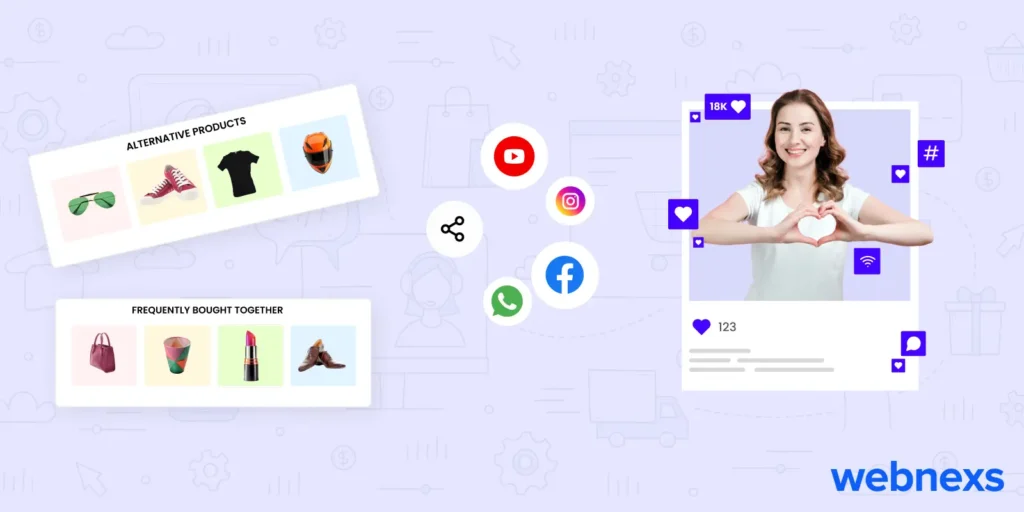
Adoption of recent changes in the marketplace trends helps businesses in the long term growth. The use of AI and automation create personalized shopping experiences that appeal to today’s tech-savvy customers.
Businesses can improve sustainability using eco-friendly practices. It is important in this modern world. Omnichannel ecommerce strategy meets the customer’s needs easily by providing connected services on various platforms.
Social commerce and influencer marketing expand your reach. Connect with customers on platforms like Instagram, TikTok, and Youtube improves brand visibility and boosts conversion rates.
Build Your Platform for 2025 Now!
Real-Life Example of AI and Automation
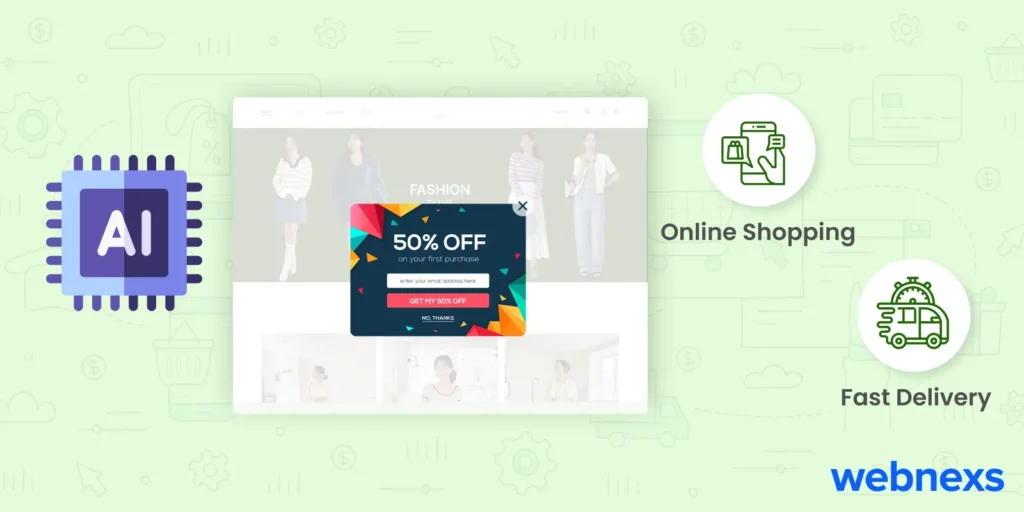
Amazon, which is one of the leading companies in the ecommerce business, has made a bold move to stay on top of the ecommerce evolution.
Amazon Prime offers fast shipping services, exclusive deals, and early access to discounts. This transformed Amazon into a one-stop solution for effortless online shopping, fast deliveries, and personalized customer experiences.
Amazon is using robots and smart algorithms for automation and AI. This helps them make faster supply chain deliveries and provide personalized recommendations.
Amazon is also advanced in AI-driven products like Alexa and Amazon Go to offer checkout-free shopping experiences to consumers.
These innovations solidified Amazon’s position as the ecommerce leader.
Sometimes, it’s not about following new trends; it’s about creating them through your own innovations.
Let’s Wrap it Up
These are the top 21 emerging latest marketplace trends in 2025.
The future of online shopping looks bright, even with the global economic challenges. The new trends in online marketplaces provide many opportunities for businesses.
After all, you cannot keep up with every trend, and it may not be the best approach. It’s important to choose the trends that matter most for your business and focus on them.
Want to start out your online marketplace and go with these trends in 2025?
We are an experienced online marketplace development company, feel free to reach out. We’ve successfully worked on many ecommerce projects, and we’d be happy to help create one for you.
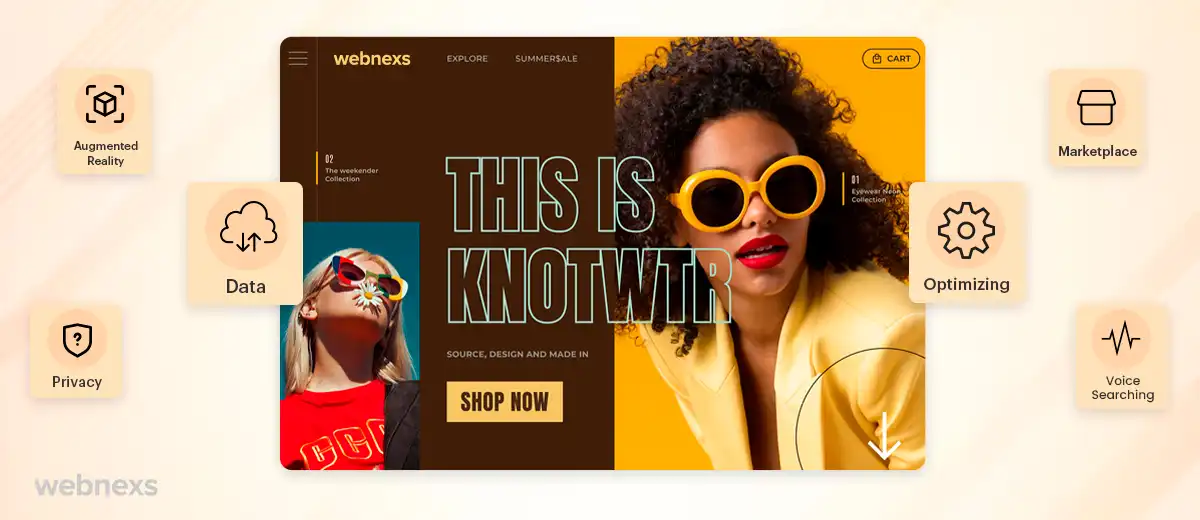





25 Responses
In conclusion, the rapid expansion of online shopping was one of the major e-commerce market trends at the beginning of the pandemic.
Despite their popularity, selling on an online marketplace is a difficult process that requires training and expertise. Delivering a seamless online shopping experience must be the main goal if one wants to increase customer engagement and satisfaction.
71 percent more people are likely to recommend a brand’s products when they receive excellent social media support. That’s my point, and I appreciate your post.
How can an online marketplace benefit my business? By keeping up with the most recent trends in online marketplace management, your business can benefit greatly.
Ecommerce marketplaces are very much businesses, so they too must develop and may, when necessary, engage in their own rebranding or acquisitions.
AI will be heavily utilized in data analysis in addition to chatbots. Good AI algorithms will be able to decipher user data and data from APIs to create analyses and insights that were previously impossible, giving marketplace managers an advantage over rivals.
The fact that one-third of all U.S. markets are online is something I am well aware of. S. Businesses “flow through e-commerce. Of that, 63% is carried out through online marketplaces.
Global retail e-commerce sales are predicted to reach $5.5 trillion in 2023, and the top 100 online marketplaces accounted for an astounding 62.7 percent of all online sales in 2021.
What benefits does the market provide to its owners and investors? Do you have any ideas? I’m making one for my company.
A business is a marketplace on the internet. You must monitor market place trendings and adjust your strategic position as necessary.
Customers are willing to pay more and stick with a sustainable brand, according to the most market place trendings.
Customers prefer mobile devices for quick transactions, and by taking advantage of this, your company can expand its clientele in line with current market trends.
This was a very informative blog and I really enjoyed reading it. But I also have a few points regarding it to discuss with you.
Online shopping is on the rise and with that comes a higher level of competition. The eCommerce industry is booming and it’s expected to grow exponentially in the coming years. You must stay up to date and follow the latest market place trending to stay with the competition.
Here are the eCommerce trends that are going to increase online sales:-
1. Voice Shopping/Conversational Shopping
2. Conversion Rate Optimization
3. Using Artificial Intelligence (AI) To Automate Sales
It is anticipated that e-commerce companies will spend about $49 billion on AI in 2023 as the use of AI in the industry grows.
For businesses to succeed in the digital market, having an omnichannel presence is essential. Given that many customers prefer to do their research online before making a purchase in a physical store, you should strengthen both your online and offline presence.
Online marketplaces have been around since 1995, and like other industries, each decade since has seen a significant advancement in marketplace technology.
The online marketplace sector is anticipated to have a successful year in 2023. Between 2023 and 2027, Amazon sales are anticipated to bring in $491 billion. Data from Statista indicate that.
A single marketplace offers very little potential for business expansion. The fact that customers are now looking for specialty online marketplaces and preferring to support local businesses means that you are more likely to succeed if you can identify a niche to serve (either a product or a market).
For a variety of reasons, in-person and on-site interactions are becoming more crucial. Online retailers and vendors are starting to recognize the value of both showrooming and webrooming experiences.
Many people are eager to read your blog, which they will soon do. In addition, the marketplace business model is about to undergo another significant change that will make it significantly more straightforward.
Can you dispute the fact that Amazon and eBay were the first productive forerunners in digitizing the market place trending business model, creating a wealth of profitable opportunities for business owners?
The current state of the market offers us a fully adjusted shopping experience that we can rely on in our busy lives. I appreciate you writing this.
One of the best aspects of the blog is that it adheres to a single principle: multiple third parties on a single platform benefit from a broader range of goods and services than a simple e-commerce site.
What would happen to the idea of an online marketplace in the 2010s if it continued to develop even more quickly?
The advantage of this is that it allows these new competitors to cater to these customer groups according to their particular needs and demands.